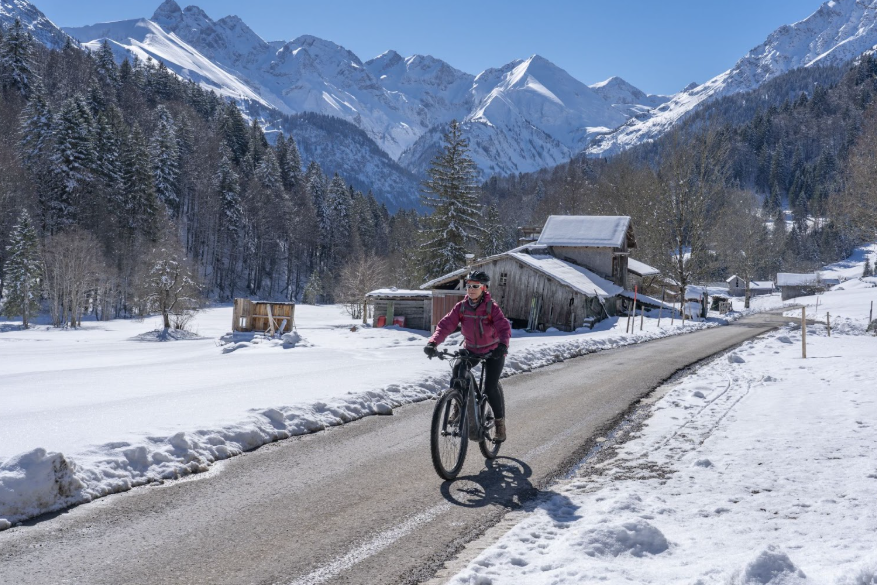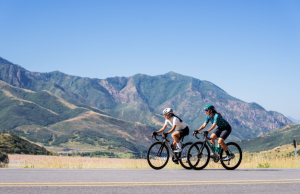4 Proven Ways To Boost Team Spirit on Your Next Cycling Group Ride

Nothing kills the vibe of a group ride faster than one cyclist limping home with numb hands while another battles saddle sores in silence.
These small miseries pile up mile after mile until what should be an exhilarating adventure feels more like an endurance test. The truth is that most cycling discomfort is entirely preventable with just a few smart adjustments that take minutes to implement.
When riders feel comfortable and connected, the collective energy naturally lifts everyone’s performance and morale. The following proven strategies will help you create the kind of ride where every team member arrives home energized rather than depleted.
1 – Essential Gear for Your Next Cycling Group Ride
Group rides demand more preparation than solo spins around the neighborhood. You’re riding with others who depend on you to be self-sufficient, and nothing derails team morale faster than someone unprepared for a mechanical issue or weather change.
Here’s your complete checklist to ensure you’re ready for anything the road throws your way.
Your Bike Setup
A well-maintained bicycle is your foundation, whether you’re on a road bike, gravel grinder, or reliable hybrid. Your helmet is essential and should fit snugly without any wobbling.
Proper cycling shoes and the right pedals create efficient power transfer that keeps you moving smoothly with the pack.
What You Wear Matters
Below are the key apparel items that separate prepared cyclists from those who struggle mile after mile:
- Shorts: Padded cycling shorts or bibs transform long rides from painful endurance tests into comfortable adventures.
- Jersey: A moisture-wicking jersey with rear pockets gives you storage without the bulk of a backpack.
- Socks: Performance custom crew socks from Custom Sock Lab prevent the blistering that can end your ride early, while cycling gloves protect your hands from numbness and road rash.
Layer smartly with arm warmers, leg warmers, or a packable jacket since group rides rarely wait for wardrobe changes.
Safety First, Always
Front and rear lights aren’t optional equipment, even for daytime rides. A simple bell alerts pedestrians and other trail users without startling them. Reflective elements on your clothing or bike make you visible when the group rolls through shaded areas or encounters unexpected weather.
Flat Tire Essentials
Every rider should carry at least two spare tubes because flats happen in bunches. Tire levers make tube changes possible without destroying your fingernails. Pack a reliable mini pump or several CO2 cartridges to inflate your tire and move the group again quickly.
Basic Tools
A compact multitool handles most trailside adjustments, from loose saddles to shifting issues. Throw a patch kit as backup insurance when you’ve exhausted your spare tubes. These small items weigh almost nothing but save entire rides.
Hydration Strategy
Mount at least two water bottle cages on your frame for any ride exceeding an hour. Plain water works for shorter spins, but longer group rides demand electrolyte supplements to replace what you’re sweating out. Dehydration sneaks up fast when focused on keeping pace with the group.
Energy on Demand
Rides longer than 90 minutes require fuel beyond what you ate for breakfast. Energy gels offer quick absorption when you need an immediate boost. Bars and real food snacks provide sustained energy and taste better than most processed options. Keep nutrition accessible in your jersey pockets so you can eat while riding.
Tech and Navigation
A cycling computer or smartphone mount keeps route info visible without forcing the group to stop while you dig through pockets. These devices also track your progress and help you understand your fitness improvements over time.
Personal Protection
Quality sunglasses shield your eyes from harmful UV rays, wind, and flying debris that loves finding unprotected eyeballs. Apply sunscreen before the ride because there’s no comfortable way to deal with a sunburn while sitting on a saddle for three hours.
Emergency Preparedness
Carry a small first aid kit with bandages and antiseptic wipes to treat minor scrapes immediately. Bring cash or a card for emergencies, unexpected mechanical issues, or that coffee shop stop the group decides on spontaneously.
Keep ID and emergency contact information somewhere accessible because accidents happen even to careful riders.
Start with the non-negotiables and build your kit over time as you discover what works for your riding style. The riders who enjoy group rides the most are the ones who can handle common issues independently without becoming a burden on others.
Gear up correctly, and you’ll spend less time worrying about problems and more time enjoying the ride.
2 – Drafting Etiquette (Save Watts, Build Trust)

The fundamental advantage of riding in a group is drafting. Sliding behind another rider can reduce wind resistance depending on speed and positioning.
This benefit isn’t just for racers since less drag means a lower heart rate at the same speed and more miles in the tank before fatigue sets in. That translates directly to more comfort and energy for conversation.
Communication Is Everything
A safe and efficient paceline runs on clear communication. A simple flick of the elbow indicates you’re ready to pull off, while a flat palm down signals the group to slow.
Verbal cues like “hole left” or “car back” are essential for avoiding hazards. The most cohesive groups establish a standard set of signals before the ride begins.
Paceline Smoothness
Mastering the paceline separates novice group riders from seasoned cyclists who make it look effortless. The difference between a smooth, efficient line and a chaotic mess comes down to three fundamental skills every rider can practice.
Here are the core techniques to earn you respect and repeat invitations from any cycling group.
- Maintain a one to two bike length gap between your front wheel and the wheel ahead. Riding any closer is risky, while riding any farther reduces the drafting benefit.
- When it’s your turn to pull at the front, focus on maintaining the group’s current speed. Avoid surging forward, which creates an accordion effect that disrupts the flow.
- After your turn at the front, flick your elbow to signal, check behind you for clearance, ease gently to the side, and drift to the back of the line to recover.
Practice these techniques on every group ride until they become second nature. Your fellow cyclists will notice the smooth transitions and consistent pacing, making you a valued member of any paceline.
The most sought-after riding partners contribute to the group’s efficiency rather than creating extra work for everyone else.
3 – Smart Pacing & Situational Awareness
Nothing disrupts group spirit faster than a “start-line hero” who surges off the front only to disrupt the group’s rhythm. The best rides have a clearly defined pace.
Post the planned average speed in the event description and honor it. Consistency builds trust and encourages participation from all skill levels.
Corner & Climb Technique
Smoothness is the key to group safety and energy preservation. When approaching corners, brake before the turn, coast through the apex, and then pedal smoothly out of it.
Encourage everyone to pedal gently over the crest and soft-pedal on climbs for 20 seconds. This simple technique keeps the group cohesive and the atmosphere stress-free.
Mini-Checklist for the Pre-Ride Brief
Every successful group ride starts with a quick team huddle before the wheels start rolling. Aligning everyone’s expectations takes five minutes and prevents confusion, miscommunication, and unnecessary stops down the road.
Run through these essential items to ensure your entire group is on the same page from the first pedal stroke.
- Route & distance confirmed
- Target pace range agreed upon
- Hand signals refresher
- Quick check of tire pressure & nutrition
This brief pre-ride discussion transforms a random collection of cyclists into a coordinated team.
Groups that skip this step often deal with riders dropping off because the pace was too aggressive, mechanical issues that could have been caught early, or dangerous situations caused by unclear signals.
Invest a few minutes at the start, and everyone involved will enjoy smoother, safer riding hours.
4 – Post-Ride Social Rituals
The ride doesn’t end when you get back to the start. A proper cool-down is crucial for recovery. Spending five minutes spinning at a low intensity, followed by gentle stretches, can reduce next-day muscle soreness. More importantly, it provides a built-in debrief zone for the group to share stories.
Coffee Stop or Photo Tradition
A simple tradition like a post-ride coffee stop can transform a group of individuals into a true team. Nothing broadcasts camaraderie quite like a group selfie with matching socks front and center.
When you tag the coffee shop or the ride on social media, your crew starts recruiting new members without trying. This builds a visual history and reinforces the group’s identity.
New-Rider Welcome Hacks
The long-term health of any cycling group depends on how it treats its newest members. Make inclusivity a priority by doing a name circle before the roll-out. After the ride, invite them to the club’s social media group. Small gestures show you’re invested in their comfort and can help build loyal members.
Turn Your Next Group Ride Into a Team Victory
Preparation and consideration can distinguish between a forgettable group ride and one with everyone texting about the next outing. When every rider shows up with the right gear, understands paceline etiquette, and commits to clear communication, the entire experience elevates from a simple workout to something genuinely memorable.
Start implementing these four strategies on your next ride and watch how quickly the group dynamic shifts. Your fellow cyclists will feel the difference immediately, and you’ll find yourself becoming the rider everyone wants in their paceline.
